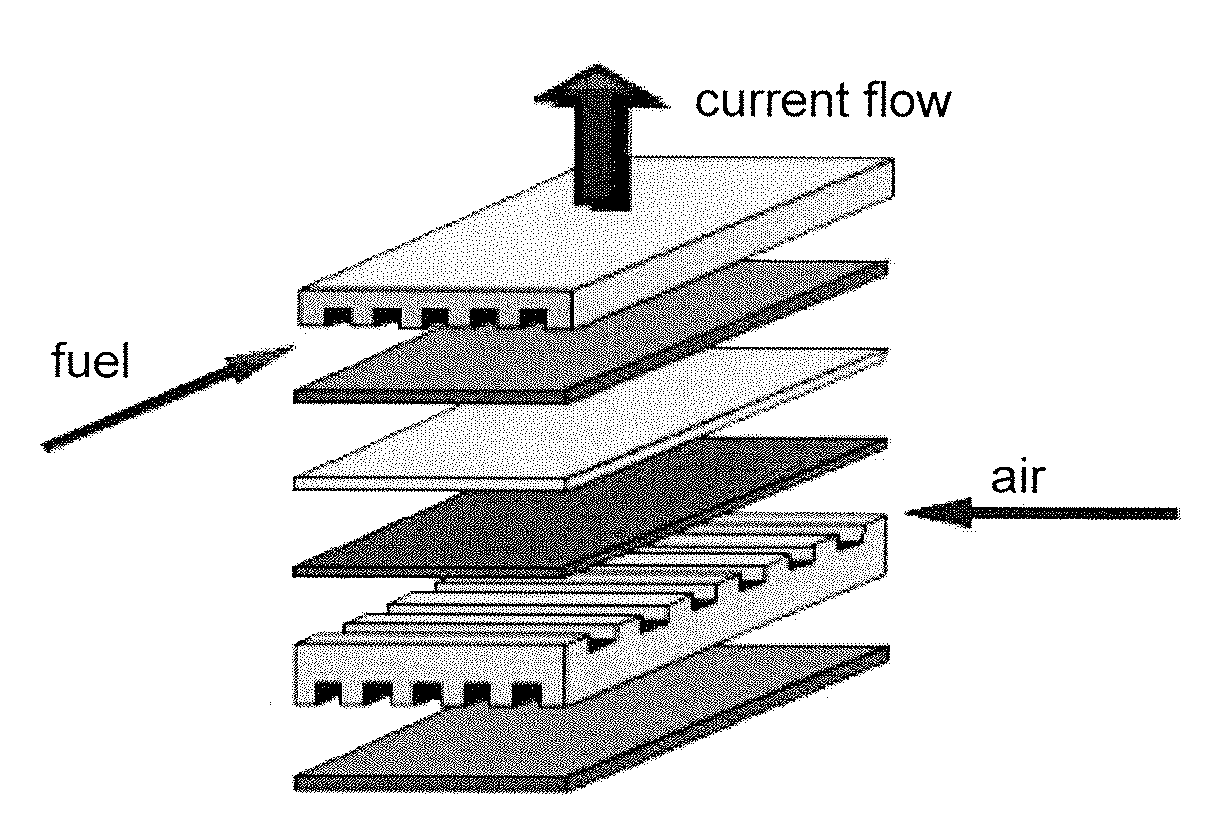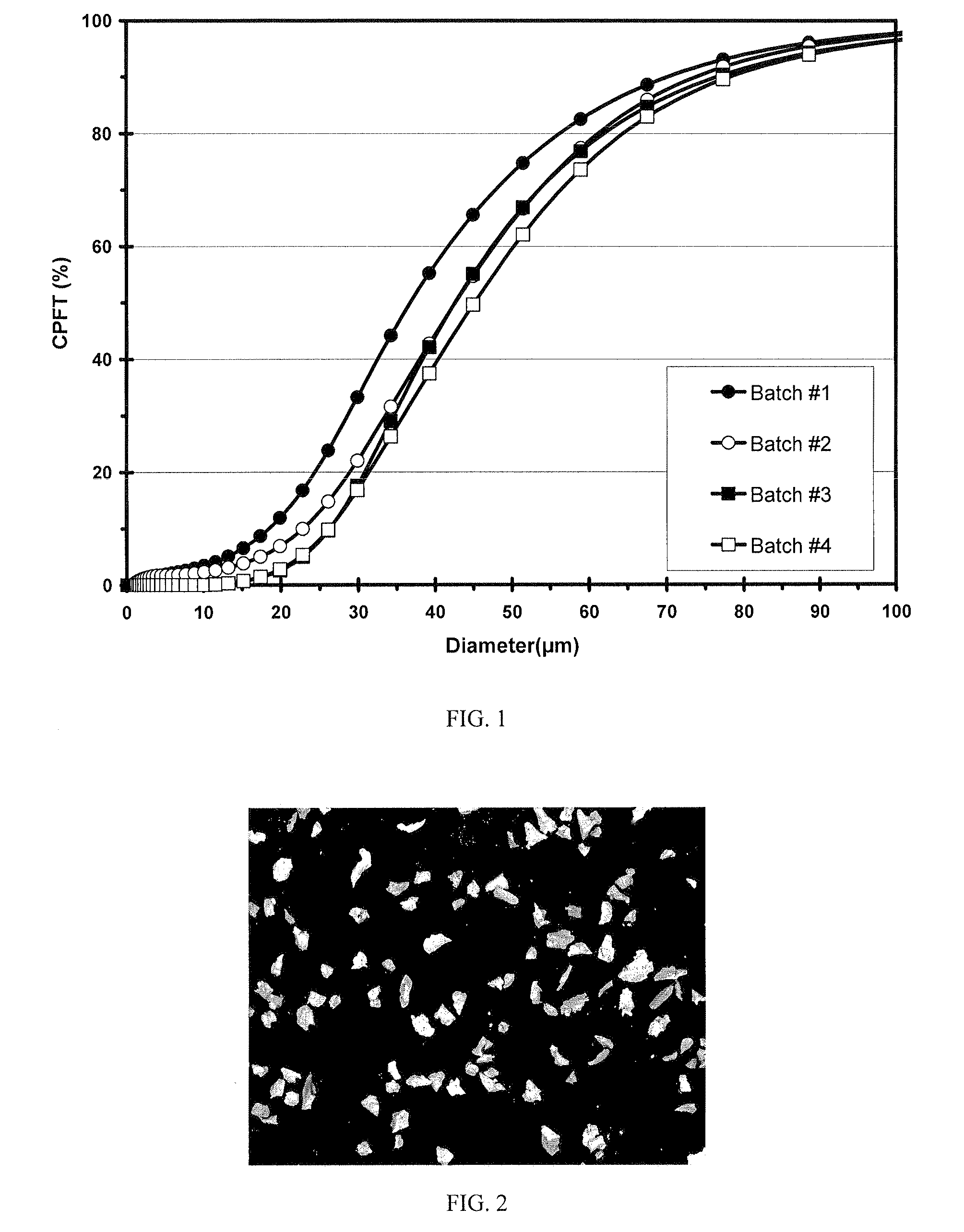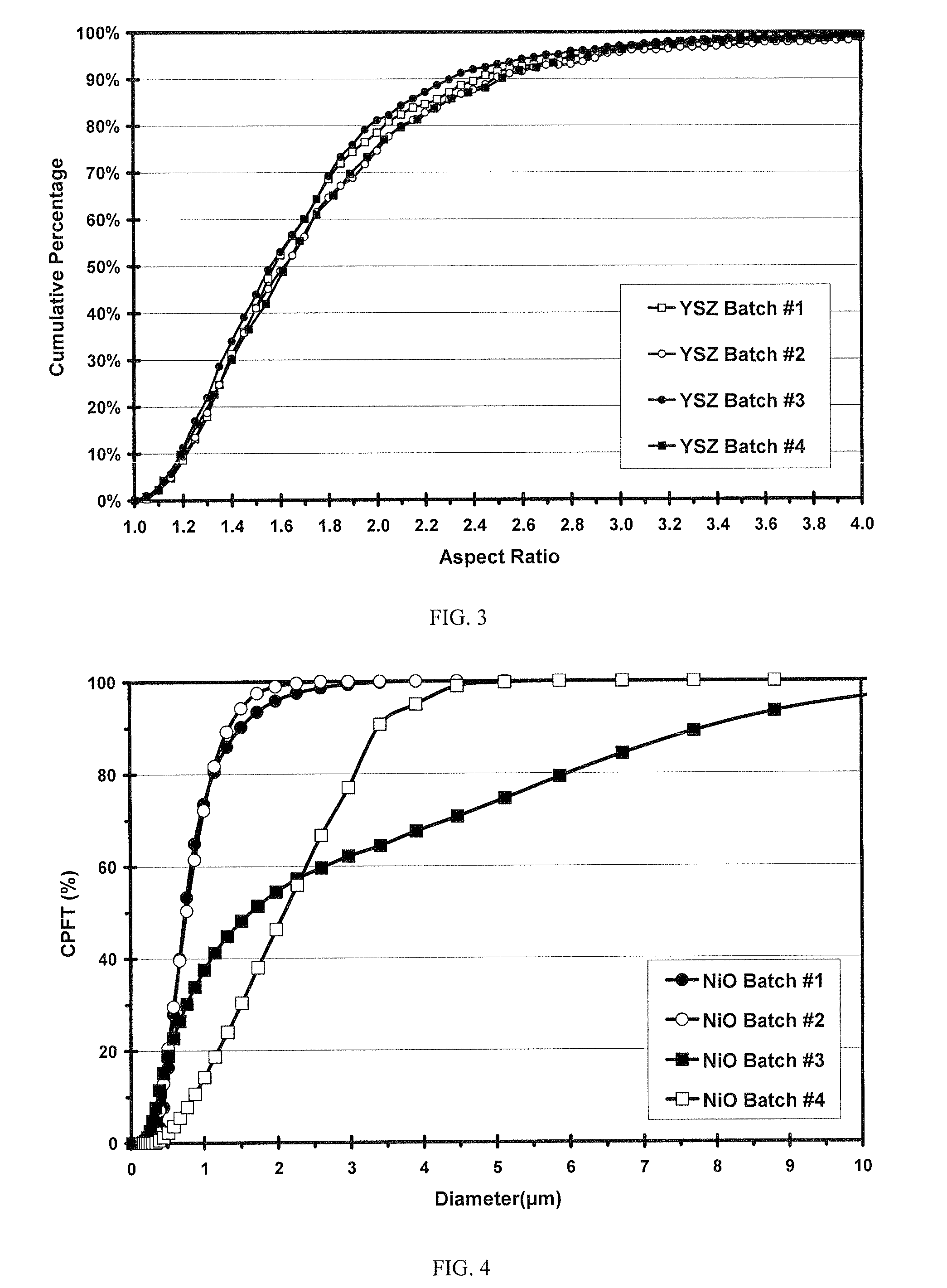Reduction-Oxidation-Tolerant Electrodes for Solid Oxide Fuel Cells
a solid oxide fuel cell and reduction-oxidation-tolerant technology, applied in the field of reduction-oxidation-tolerant electrodes for solid oxide fuel cells, can solve the problems of increasing fractions of nio creating difficulties, failure of solid oxide fuel cell stacks, and significant cyclic stresses, and achieves low nio fractions, prevent volume reduction, and high mechanical impingement
- Summary
- Abstract
- Description
- Claims
- Application Information
AI Technical Summary
Benefits of technology
Problems solved by technology
Method used
Image
Examples
Embodiment Construction
Reduction-Oxidation-Tolerant Anode Compositions
[0030]In one embodiment, this invention is a method by which anode microstructures can be formed with significantly improved reduction-oxidation tolerance by using large, elongate-shaped ceramic powders in combination with finer ceramic powders.
[0031]In another embodiment, novel features of this invention include a sufficient electrical conductivity with less than the commonly-held lower limit of 30 vol. % Ni and a composite anode microstructure composed of coarse elongated YSZ particles and fine spherical, or fine elongated NiO / YSZ or NiO particles.
[0032]In still another embodiment, this invention is directed to a method of making bulk anode and bulk cathode components such that their coefficients of thermal expansion are equivalent even though their compositions, chemical properties and electrochemical performance are significantly different. In this way, cyclic thermal stresses that develop in solid oxide fuel cell stacks because of ...
PUM
| Property | Measurement | Unit |
|---|---|---|
| Percent by volume | aaaaa | aaaaa |
| Particle size | aaaaa | aaaaa |
| Particle size | aaaaa | aaaaa |
Abstract
Description
Claims
Application Information
 Login to View More
Login to View More - R&D
- Intellectual Property
- Life Sciences
- Materials
- Tech Scout
- Unparalleled Data Quality
- Higher Quality Content
- 60% Fewer Hallucinations
Browse by: Latest US Patents, China's latest patents, Technical Efficacy Thesaurus, Application Domain, Technology Topic, Popular Technical Reports.
© 2025 PatSnap. All rights reserved.Legal|Privacy policy|Modern Slavery Act Transparency Statement|Sitemap|About US| Contact US: help@patsnap.com



